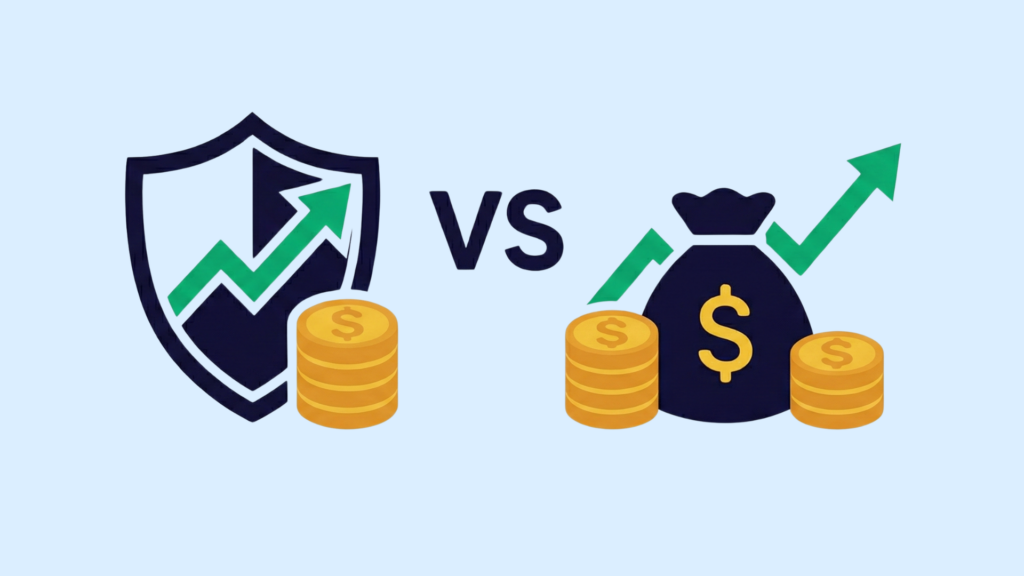Quick Summary:
– Assets Under Management, or AUM, is the total market value of all assets that are being managed for the benefit of fund investors.
– AUM is usually a good indicator of investor confidence, and often foreshadows good performance, and is useful for funding and resourcing for the fund, but does not guarantee or indicate better performance of the fund.
– AUM is calculated by the current market value of all of the assets adjusted by any transactions that investors in the fund have made, as well as any relevant conditions of the market.
– More generally, the larger the AUM is indicative of lower costs per investor, but it can also mean more complexity around managing the fund and liquidity available.
– AUM is a helpful consideration for sizing and stability of the fund, but should not be examined alone, but rather compared to selected other measures such as NAV and expense ratios.
What is an Asset Under Management (AUM)?
Assets Under Management (AUM) in mutual funds are the total market value of all investments the fund manages on its investors’ behalf. It includes all the capital pooled from investors, which the fund manager uses to buy and sell securities.
For instance, if a mutual fund manages $1 billion in assets, it has $1 billion worth of investments across various stocks, bonds, or other securities. This suggests the fund has a strong track record and significant investor confidence.
However, while a high AUM can signify stability and resource availability, it doesn’t always guarantee better performance or higher returns.
How is AUM Calculated?
To calculate AUM, sum up the current market value of all assets in the fund. This involves accounting for:
- Investor Inflows and Outflows: New investments increase AUM, while redemptions decrease it.
- Market Movements: Changes in asset prices also impact AUM. For instance, if the market value of assets rises, so does the AUM.
Why AUM is Important for Investors
AUM is important because it:
- Indicates Fund Size and Stability: A larger AUM often signifies a well-established fund with more resources.
- Influences Investment Capacity: Funds with higher AUM can offer more diversification and are generally more stable during market fluctuations.
- Affects Fees and Management: Larger funds might benefit from economies of scale, leading to lower expense ratios, though they may also face management challenges due to their size.
The Role of AUM in Mutual Fund Performance
Assets Under Management (AUM) can reflect a mutual fund’s success and popularity, but it’s not a standalone indicator of superior performance. Understanding how AUM impacts a fund’s management and liquidity can provide deeper insights into its potential. Let’s understand this in detail.
Impact of AUM on Fund Management
A higher AUM gives fund managers more capital to work with, which can be beneficial for scaling investments and leveraging opportunities. However, managing a larger fund can become increasingly complex.
This complexity arises particularly in smaller or less liquid markets where deploying large sums can be challenging. Fund managers must carefully balance investment strategies to maintain efficiency and performance without distorting market conditions.
Liquidity and AUM
While a large AUM can provide advantages, it can also introduce liquidity challenges. If a fund has substantial assets, the manager may face difficulties quickly selling significant positions.
This issue is especially pertinent for equity mutual funds focused on small-cap or mid-cap stocks with lower trading volumes. Large transactions in these markets can affect stock prices and potentially lead to less favourable trade execution.
Types of Funds and AUM
Different types of mutual funds exhibit distinct patterns in terms of their AUM, such as:
Equity Mutual Funds and AUM
Equity mutual funds generally have larger AUM compared to other types of funds. This growth is driven by the potential for higher returns, which attracts substantial investor interest. As equity markets perform well, these funds often increase AUM as more investors seek to capitalise on market gains.
Debt Mutual Funds and AUM
Debt mutual funds, known for their conservative nature and predictable returns, typically maintain a more stable AUM. Investors seeking lower risk and stable income often gravitate towards these funds, leading to consistent, albeit slower, growth in AUM. The stability in AUM is due to the nature of the investments, which are less susceptible to market fluctuations than equities.
Hybrid Funds and AUM
Hybrid funds invest in equity and debt, and their AUM can vary widely. Their asset allocation strategies, which can shift based on market conditions and investor preferences, influence their AUM.
For example, a hybrid fund with a higher allocation to equities may experience more significant AUM growth during bullish market conditions. At the same time, those with more debt may show stability in varying market climates.
AUM vs. Other Fund Metrics
When evaluating mutual funds, it’s essential to consider Assets Under Management (AUM) alongside other key metrics like Net Asset Value (NAV) and expense ratios. While AUM provides insight into the fund’s size and stability, it shouldn’t be the only factor in your decision-making process.
AUM vs. NAV
Assets Under Management (AUM) refers to a mutual fund’s total value of assets. It indicates the fund’s overall size and market presence.
On the other hand, Net Asset Value (NAV) represents the per-unit price of the mutual fund. This is calculated by dividing the total value of the fund’s assets minus liabilities by the number of outstanding shares.
While AUM gives a snapshot of the fund’s scale, NAV tells you the current value of each share you own.
AUM and Expense Ratios
Funds with larger AUM often benefit from economies of scale, which can lead to lower expense ratios. An expense ratio measures the percentage of fund assets used for operational expenses, such as management fees and administrative costs.
Larger funds can spread these costs over a bigger asset base, potentially reducing the percentage charged to investors. However, evaluating expense ratios separately is important, as a lower ratio doesn’t always equate to better performance.
Factors Affecting AUM Growth
Understanding what drives the growth of a fund’s Asset Under Management (AUM) can help investors make informed decisions. Some of these factors include:
Market Performance
Positive market performance can significantly boost AUM. When the market value of the assets held by a fund rises, so does the AUM. This increase happens because the overall value of the investments within the fund grows, reflecting positively on the fund’s total asset base.
Fund Inflows and Redemptions
Inflows and redemptions play a direct role in shaping AUM. Investor contributions, or inflows, increase AUM as new money is added to the fund. Conversely, redemptions, or withdrawals, decrease AUM by removing capital from the fund.
The Bottom Line
Evaluating a mutual fund’s Assets Under Management (AUM) is crucial for understanding its size and stability. A higher AUM generally reflects a more established fund with potentially lower volatility, which can signify stability and investor confidence.
Appreciate online trading app simplifies this process by providing tools to compare AUM across mutual funds easily. This feature helps you assess the size and stability of funds effectively, enabling you to make well-informed investment decisions and build a robust portfolio.
FAQs
What is an asset under management (AUM) in a mutual fund?
Asset Under Management (AUM) refers to the total market value of the assets a mutual fund manages on behalf of its investors. It includes all fund investments, such as stocks, bonds, and cash equivalents.
How is AUM calculated?
AUM is calculated by summing up the current value of the mutual fund’s assets. This value changes with the market performance and investor transactions, such as contributions and withdrawals.
Why is AUM important for mutual fund investors?
AUM indicates the fund’s size and investment capacity, which can affect liquidity and the fund’s ability to execute trades. It also offers insight into the fund’s popularity and investor confidence.
Does higher AUM mean better fund performance?
A higher AUM does not necessarily mean better fund performance; it reflects the fund’s size and scale rather than its returns. Performance should be assessed based on historical returns, risk levels, and fund management quality.
How does AUM impact fund management?
Larger AUM can provide economies of scale, reducing costs per investor, but it may also limit flexibility in making investment decisions. Fund managers may face challenges in managing a large portfolio efficiently without affecting the market.
What is the difference between AUM and NAV?
AUM is the total value of assets the fund manages, while NAV (Net Asset Value) represents the per-share value of the fund’s assets minus its liabilities. NAV determines the price at which shares are bought or sold, whereas AUM reflects the fund’s overall size.
How does market performance affect AUM?
Market performance directly affects AUM, as rising asset values increase it while falling values decrease it. Changes in market conditions can lead to significant fluctuations in the total value of the assets under management.
How do inflows and redemptions impact AUM?
Inflows, or new investments into the fund, increase AUM, while redemptions, or withdrawals by investors, decrease it. Both inflows and redemptions can cause changes in AUM, affecting the fund’s size and potential performance.
Is it better to invest in funds with a higher AUM?
Investing in funds with higher AUM can offer benefits such as greater liquidity and potentially lower costs, but it does not always guarantee better performance. Factors like the fund’s track record, management, and investment strategy should be considered.
Can a high AUM lead to liquidity issues?
A high AUM can lead to liquidity issues if the fund struggles to manage its large asset base without affecting market prices. This can be particularly problematic in less liquid markets where large trades may impact asset values.
Disclaimer: Investments in securities markets are subject to market risks. Read all the related documents carefully before investing. The securities quoted are exemplary and are not recommendatory.























